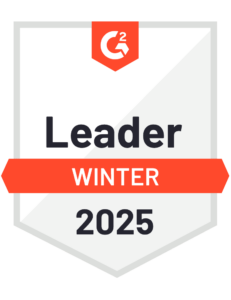What is Bank Reconciliation: A Comprehensive Guide
Blog post
Share
Introduction to Bank Reconciliation
The purpose of bank reconciliation is to help businesses identify errors that may affect the integrity of their tax filings and financial reporting. Bank reconciliation also enables companies to manage cash flow and detect fraud. In this guide, we will address all aspects of the bank reconciliation process.
Definition and Overview
During the reconciliation process, a designated member of the accounting department compares company bank statements with the general ledger. Ideally, entries into the general ledger should match those in the bank statement. In the event the two do not match, the company’s accountant will need to determine what is missing and whether the error originated with the company or the bank. They will then take the necessary steps to bring the general ledger and the bank statement discrepancy into agreement.
Importance of Bank Reconciliation
A company that loses control of its cash flow situation will open itself up to fraud and find itself facing an array of both short and long-term issues. Bank reconciliation is an essential means to ensure the accuracy and consistency of a company’s financial records.
Identifying and Rectifying Accounting Errors
Accounting errors take many forms including double payments and missed payments. Bank reconciliation enables you to identify such errors before they create a cascade of negative effects that ripple through your business. Issues emanating from accounting errors can be embarrassing and potentially expensive and may generate scrutiny from tax authorities.
While manual reconciliation is still the order of the day for many companies, others are realizing the immense value of automating the reconciliation process using accounting software such as Cadency or Adra by Trintech. The net result of using financial software is greater efficiency with staff members freed up to perform more pressing tasks.
Fraud Detection and Prevention
Reconciliation provides a priceless opportunity to compare your accounting records with those of an objective third party. In this case the bank. This is one of the most effective ways to detect fraudulent transactions and allows you to take corrective action and pre-empt damage to the business.
Managing and Assessing Financial Risks
Accurate financial statements are a must if investors and company leaders are to make informed decisions related to potential financial risks. Reconciliation provides a reliable snapshot of the company’s cash flow which, in turn, can help with long-range planning.
Maintaining Financial Accuracy and Transparency
Stakeholders need to know that financial statements issued by the company are reliable. Bank reconciliation is one of the best ways to ensure that. Timing differences related to deposits or payments can sometimes cause apparent discrepancies between the general ledger and the bank statement. Reconciliation can identify these timing anomalies and reconcile any such discrepancies.
Delving into the Bank Reconciliation Process
The bank reconciliation process typically proceeds in the following fashion.
Initial Review: Analyzing the Bank Statement
Once the bank statement has been received the accounting department will set out to analyze it. This preliminary step is intended to identify any glaring errors or unexpected entries. If everything seems more or less in order the accountant proceeds to the next step.
Matching: Comparing Bank Statement with Internal Records
This step in the reconciliation process entails comparing the company’s general ledger to the bank statement. Ideally, all deposits and withdrawals/payments in the general ledger should match those on the bank statement. All bank and ledger entries should have appropriate matches, whether those are one-to-one, one-to-many, or many-to-many. If there are transactions lacking appropriate match(es), those must be investigated.
Making Manual Resolutions
The next step is making any manual resolutions, taking into consideration bank fees, any interest earned and other items, including monthly account charges, bank service fees, fees for NSF checks and more. If a customer issued an NSF check, that amount will need to be deducted from the company’s cash account total.
Final Reconciliation and Substantiation
The final reconciliation and verification process is where you ensure all discrepancies between the general ledger and the bank statement have been accounted for and reconciled. At the end of the verification process, both should display the same balance. If one does not, you will need to start the process over again.
Challenges and Solutions in Bank Reconciliation
Today, the bank reconciliation process remains primarily a manual exercise for many companies. As a result, errors and inconsistencies are very common. There are often delays in transactions being recorded by the bank and checks are not always presented for payment by recipients in a timely fashion.
Common Problems and Mistakes Encountered
- Deposits in transit not entered into the ledger.
- Outstanding checks not yet entered into the ledger.
- Incorrect transaction details entered during manual reconciliation.
Navigating Non-Sufficient Funds (NSF) Checks
While checks returned due to non-sufficient funds can cause reconciliation headaches you can take the following steps to deal with the issue.
- Contact the customer that issued the check.
- Send a new bill that includes the bank fee you incurred for the NSF check.
- Follow this up with a letter demanding payment.
- Should those steps fail, turn the matter over to a collection agency.
- As a last resort consider initiating legal action.
Addressing Late Reconciliations
Prolonged gaps in reconciliations can lead to dire consequences. For one, it can allow systemic errors to propagate. Also, if someone is engaging in fraudulent activity, failing to perform reconciliations in a timely fashion could allow them to inflict serious damage on the integrity of the business.
Key Takeaways for Success
- Keep all your documentation up to date
- Perform bank reconciliations monthly
- Look for common discrepancies
- Don’t overlook money in the cash registers
- Automate the reconciliation process using Trintech software
Tools and Templates to Streamline the Process
The benefits of using accounting software such as Adra or Cadency from Trintech is the significant time savings they provide. Automation all but eliminates the need to repeat the reconciliation process, as often happens due to human error during manual reconciliation.
Automated reconciliation also provides full transparency and traceability along with rock-solid compliance. Reconciliation software also provides a crystal-clear audit trail, recording exactly who did what and when they did it.
Frequently Asked Questions (FAQs)
What is a bank reconciliation statement?
The bank reconciliation statement or BRS is a document the company accounting department prepares that contrasts the company’s general ledger with the latest bank statement. If there are any discrepancies between the two, they will be listed on the bank reconciliation statement along with the cause of the discrepancy and the actions taken to reconcile the two.
Why is timely reconciliation crucial?
Reconciliation ensures company leaders and stakeholders always have accurate information to work with. Timely reconciliation also helps to ferret out fraud before things get out of hand, and it can shine a light on systemic errors originating either with the bank or with the company’s accounting department.
What are the core steps in bank reconciliation?
- Analyzing the bank statement when it is received.
- Comparing the company’s general ledger to the bank statement.
- Making any necessary adjustments to your bank account balance.
- Recording the reconciliation.
Different methods and approaches in reconciliation
There are three principal methods of performing bank reconciliation:
- The bank statement method: The method described in this guide.
- The balance sheet method: The balance sheet method may also entail comparing the general ledger with a bank statement. But it might also entail analyzing line items in the company accounts.
- The adjusted balance method: This method bases finance charges on amounts owed at the end of a given billing cycle.
Tips for seamless and error-free reconciliation
If you want to make the bank reconciliation process more efficient and accurate, the best way to do so is to automate reconciliation with Trintech Adra or Cadency software. ReconNET can automate more than 90% of your monthly reconciliation activity while reducing both time and money spent on the process. Tighten your internal controls, minimize the amount of time your accountants spend on reconciliation, and reduce the error rate to virtually nothing, all with Trintech reconciliation software.
Conclusion
Bank reconciliation plays a vital role in ensuring the financial health and viability of your business. Failing to perform timely bank reconciliation can open the door to adverse effects that ripple through the entire organization, compromising your future prospects, attracting the attention of tax authorities and more.
Learn more in our Finance & Accounting Glossary






